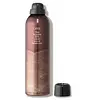What's inside
What's inside
 Key Ingredients
Key Ingredients

 Benefits
Benefits

 Concerns
Concerns

 Ingredients Side-by-side
Ingredients Side-by-side

Hydrofluorocarbon 152a
Sd Alcohol 40-B
AstringentButane
Acrylates/Octylacrylamide Copolymer
Isobutane
Aluminum Starch Octenylsuccinate
AbsorbentParfum
MaskingNeopentyl Glycol Diheptanoate
EmollientBoron Nitride
AbsorbentIsododecane
EmollientWater
Skin ConditioningPanthenol
Skin ConditioningBenzophenone-4
UV AbsorberTocopheryl Acetate
AntioxidantZeolite
AbsorbentGlycerin
HumectantCitrullus Lanatus Fruit Extract
Skin ConditioningLitchi Chinensis Fruit Extract
Skin ConditioningLeontopodium Alpinum Flower/Leaf Extract
Skin ConditioningPhenoxyethanol
PreservativeStyrax Benzoin Resin Extract
MaskingCitric Acid
BufferingPotassium Sorbate
PreservativeSodium Benzoate
MaskingLimonene
PerfumingHexyl Cinnamal
PerfumingLinalool
PerfumingCitral
PerfumingHydrofluorocarbon 152a, Sd Alcohol 40-B, Butane, Acrylates/Octylacrylamide Copolymer, Isobutane, Aluminum Starch Octenylsuccinate, Parfum, Neopentyl Glycol Diheptanoate, Boron Nitride, Isododecane, Water, Panthenol, Benzophenone-4, Tocopheryl Acetate, Zeolite, Glycerin, Citrullus Lanatus Fruit Extract, Litchi Chinensis Fruit Extract, Leontopodium Alpinum Flower/Leaf Extract, Phenoxyethanol, Styrax Benzoin Resin Extract, Citric Acid, Potassium Sorbate, Sodium Benzoate, Limonene, Hexyl Cinnamal, Linalool, Citral
Hydrofluorocarbon 152a
Alcohol Denat.
AntimicrobialButane
Acrylates/Octylacrylamide Copolymer
Isobutane
Isocetyl Alcohol
EmollientPhenyl Trimethicone
Skin ConditioningDimethicone
EmollientWater
Skin ConditioningHippophae Rhamnoides Seed Oil
Skin ProtectingTocopheryl Acetate
AntioxidantMauritia Flexuosa Fruit Oil
Skin ConditioningDimethiconol
EmollientTrimethylsiloxysilicate
EmollientPanthenol
Skin ConditioningPropane
Propylene Glycol
HumectantBenzoic Acid
MaskingPPG-12 Dimethicone
Skin ConditioningEthylhexyl Methoxycinnamate
UV AbsorberTocopherol
AntioxidantParfum
MaskingHydroxycitronellal
PerfumingLimonene
PerfumingHydrofluorocarbon 152a, Alcohol Denat., Butane, Acrylates/Octylacrylamide Copolymer, Isobutane, Isocetyl Alcohol, Phenyl Trimethicone, Dimethicone, Water, Hippophae Rhamnoides Seed Oil, Tocopheryl Acetate, Mauritia Flexuosa Fruit Oil, Dimethiconol, Trimethylsiloxysilicate, Panthenol, Propane, Propylene Glycol, Benzoic Acid, PPG-12 Dimethicone, Ethylhexyl Methoxycinnamate, Tocopherol, Parfum, Hydroxycitronellal, Limonene
Ingredients Explained
These ingredients are found in both products.
Ingredients higher up in an ingredient list are typically present in a larger amount.
We don't have a description for Acrylates/Octylacrylamide Copolymer yet.
Butane is a gas derived from petroleum and natural gas. It is used as an aerosol propellant.
We don't have a description for Hydrofluorocarbon 152a yet.
We don't have a description for Isobutane yet.
Limonene is a fragrance that adds scent and taste to a formulation.
It's found in the peel oil of citrus fruits and other plants such as lavender and eucalyptus. The scent of limonene is generally described as "sweet citrus".
Limonene acts as an antioxidant, meaning it helps neutralize free radicals.
When exposed to air, oxidized limonene may sensitize the skin. Because of this, limonene is often avoided by people with sensitive skin.
The term 'fragrance' is not regulated in many countries. In many cases, it is up to the brand to define this term. For instance, many brands choose to label themselves as "fragrance-free" because they are not using synthetic fragrances. However, their products may still contain ingredients such as essential oils that are considered a fragrance.
Learn more about LimonenePanthenol is a common ingredient that helps hydrate and soothe the skin. It is found naturally in our skin and hair.
There are two forms of panthenol: D and L.
D-panthenol is also known as dexpanthenol. Most cosmetics use dexpanthenol or a mixture of D and L-panthenol.
Panthenol is famous due to its ability to go deeper into the skin's layers. Using this ingredient has numerous pros (and no cons):
Like hyaluronic acid, panthenol is a humectant. Humectants are able to bind and hold large amounts of water to keep skin hydrated.
This ingredient works well for wound healing. It works by increasing tissue in the wound and helps close open wounds.
Once oxidized, panthenol converts to pantothenic acid. Panthothenic acid is found in all living cells.
This ingredient is also referred to as pro-vitamin B5.
Learn more about PanthenolParfum is a catch-all term for an ingredient or more that is used to give a scent to products.
Also called "fragrance", this ingredient can be a blend of hundreds of chemicals or plant oils. This means every product with "fragrance" or "parfum" in the ingredients list is a different mixture.
For instance, Habanolide is a proprietary trade name for a specific aroma chemical. When used as a fragrance ingredient in cosmetics, most aroma chemicals fall under the broad labeling category of “FRAGRANCE” or “PARFUM” according to EU and US regulations.
The term 'parfum' or 'fragrance' is not regulated in many countries. In many cases, it is up to the brand to define this term.
For instance, many brands choose to label themselves as "fragrance-free" because they are not using synthetic fragrances. However, their products may still contain ingredients such as essential oils that are considered a fragrance by INCI standards.
One example is Calendula flower extract. Calendula is an essential oil that still imparts a scent or 'fragrance'.
Depending on the blend, the ingredients in the mixture can cause allergies and sensitivities on the skin. Some ingredients that are known EU allergens include linalool and citronellol.
Parfum can also be used to mask or cover an unpleasant scent.
The bottom line is: not all fragrances/parfum/ingredients are created equally. If you are worried about fragrances, we recommend taking a closer look at an ingredient. And of course, we always recommend speaking with a professional.
Learn more about ParfumTocopheryl Acetate is AKA Vitamin E. It is an antioxidant and protects your skin from free radicals. Free radicals damage the skin by breaking down collagen.
One study found using Tocopheryl Acetate with Vitamin C decreased the number of sunburned cells.
Tocopheryl Acetate is commonly found in both skincare and dietary supplements.
Learn more about Tocopheryl AcetateWater. It's the most common cosmetic ingredient of all. You'll usually see it at the top of ingredient lists, meaning that it makes up the largest part of the product.
So why is it so popular? Water most often acts as a solvent - this means that it helps dissolve other ingredients into the formulation.
You'll also recognize water as that liquid we all need to stay alive. If you see this, drink a glass of water. Stay hydrated!
Learn more about Water